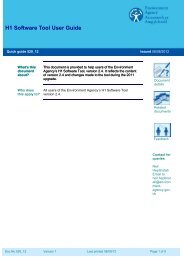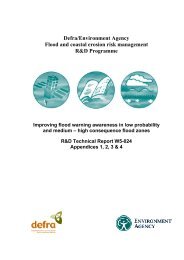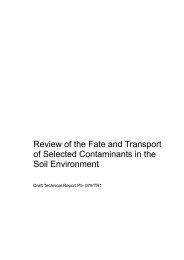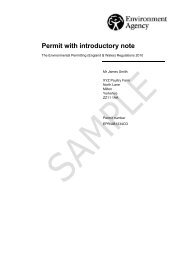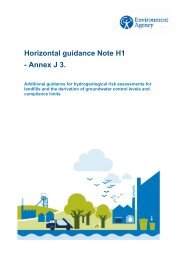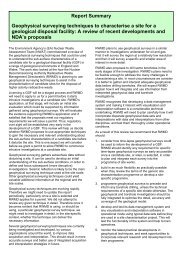The ecology and conservation of threatened damselflies
The ecology and conservation of threatened damselflies
The ecology and conservation of threatened damselflies
You also want an ePaper? Increase the reach of your titles
YUMPU automatically turns print PDFs into web optimized ePapers that Google loves.
to this watercourse <strong>and</strong> the variety <strong>of</strong> movement directions may reflect this. <strong>The</strong> circular<br />
variance <strong>of</strong> the directional mean was 0.92. This suggests the mean was not a good<br />
representation <strong>of</strong> the set <strong>of</strong> input vectors (as the variance is close to one, its maximum)<br />
<strong>and</strong> that there was little directional bias to these movements (Gaile <strong>and</strong> Burt 1980).<br />
However, if orientation is considered (the angle <strong>of</strong> movement without direction), the<br />
mean axis was 87° - 267° <strong>and</strong> the circular variance 0.32 (maximum 0.5 for a 180º<br />
distribution). This indicates that the orientation vectors were somewhat better<br />
represented by their mean <strong>and</strong> that movements along the angle <strong>of</strong> the main water body<br />
were more common.<br />
To examine the effect <strong>of</strong> wind direction on direction <strong>of</strong> movement, the difference in<br />
angle between each first mature movement <strong>and</strong> the mean wind direction during that<br />
movement was calculated. As wind direction can vary considerably (Fig. 2.12; circular<br />
variance <strong>of</strong> wind directions between 10am <strong>and</strong> 7 pm during study = 0.72), only those<br />
movements with an inter-catch interval <strong>of</strong> 1 or 2 days were used (n = 580). <strong>The</strong>re was<br />
a small tendency towards movements approximately 50° different from the mean wind<br />
direction during that movement (Fig. 2.13). However, the circular mean <strong>of</strong> the<br />
difference between wind <strong>and</strong> movement direction was 85.7°, which is close to the<br />
median <strong>of</strong> possible differences (90º) <strong>and</strong> there was no strong trend in the distribution <strong>of</strong><br />
differences (circular variance = 3.5, maximum 0.5 for 180° distribution). This suggests<br />
that adult I. pumilio are able to compensate for wind. This was true even at higher wind<br />
speeds as there was no correlation between wind speed <strong>and</strong> the difference between<br />
movement <strong>and</strong> wind direction (Pearson correlation coefficient = 0.003, P = 0.94).<br />
32 Science Report – <strong>The</strong> <strong>ecology</strong> <strong>and</strong> <strong>conservation</strong> <strong>of</strong> <strong>threatened</strong> <strong>damselflies</strong>



